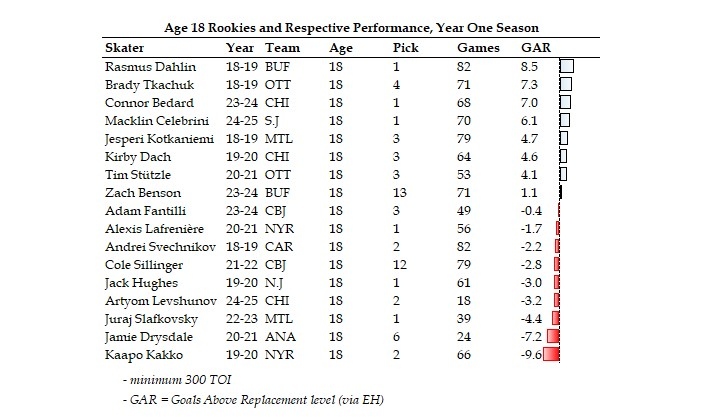4h ago
The NHL is a young man’s game, but prospects need time
Many of the players selected over the weekend will positively impact their organization, but even in a league that increasingly skews towards younger skill, these transitions take time, Travis Yost writes.
By Travis Yost
Can New York’s Matthew Schaefer, San Jose’s Michael Misa, or one of the other blue-chip prospects selected at the 2025 NHL Draft have an impact as soon as next season?
The NHL is increasingly a young man’s game, and organizations have changed their approach to roster building accordingly.
The league skews heavily towards players aged in their mid-20s for two critical reasons. The first is that, time and again, hockey aging curves show a player’s mid-20s are his peak performance years. The second concerns contracts – the league’s collective bargaining agreement typically puts players under team control earlier in their careers, limiting exposure to the league’s broader market. That can keep salaries in check in most cases, at least until a player is eligible for unrestricted free agency.
That said, the success rate of extremely young skaters is fleeting at best and reserved typically for the game’s elite. Most high-grade prospects will spend time in lower leagues, rounding out their skill set and allowing more time for physical growth and development.
Unless a team has high confidence that a young player can make a material impact in the win-loss column, they will typically punt for at least a year, if not longer. Elevating a player so early on doesn’t just have future contractual implications, it can also hurt long-term development. And we have seen both examples in spades.
Analyzing the top cut of this draft class in relation to years past, you get a sense for how difficult cracking an NHL lineup in year one might be — doubly so when you evaluate the players in the context of whether they’re having a positive impact on outcomes.
Looking at under-20 rookies in the past seven years, there are only a handful of skaters each season who see regular time (17, in total), and an even smaller group of players who were impossible to keep out of the starting lineup:

There are many talented players tabled here, but that didn’t necessarily mean their year one, age-18 season in the big leagues was a success story.
Players like Buffalo’s Rasmus Dahlin and Ottawa’s Brady Tkachuk looked great early and often, whereas players like Carolina’s Andrei Svechnikov and New Jersey’s Jack Hughes had to take their proverbial lumps before breaking out and entrenching themselves as high-impact forwards. Some of these players still haven’t broken out against the stiffer competition you find at the NHL level.
Each player’s path to the NHL will be different and it’s not solely tied to the individual’s development (which also can vary from player to player). The talent makeup of those teams certainly comes into focus, as does the club’s salary cap situation. Sometimes it makes sense to punt on a full year or longer; sometimes, an electric player on a cheap entry-level contract is what a championship contender up against the salary cap ceiling may need to fortify their lineup.
Every situation is different, though NHL front offices will play it a little more aggressively with skaters (especially forwards) taken at the very top of the draft. Every single age-18 rookie in the table above was taken in the first round, and the average pick in round one they were taken at was 3.5.
Many of the players selected over the weekend will positively impact their organization, but even in a league that increasingly skews towards younger skill, these transitions will take time.
Players like Schaefer and Misa may be eyeballing opening-night roster spots, but they remain much more of an exception than the norm.
Data via Natural Stat Trick, NHL.com, Evolving Hockey

